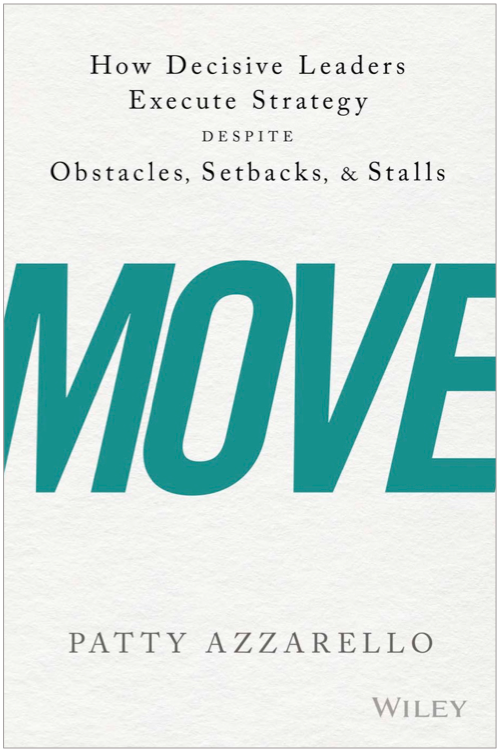Getting Clear
As I work with management teams who want to successfully execute a change…
Or to get their organization to step up to a more strategic or scalable way of working…
They often tell me, this is not a new idea, but we need to make it stick this time.
I have been thinking a lot about this lately – Why is it so hard to get organizations to stop doing what they are currently doing, and to start doing what the need to be doing?
Here’s the thought: Clarity is the secret sauce for execution, but clarity causes conflict, and most people don’t like conflict. So execution stalls.
Comfort with conflict
You need to be comfortable with the fact that creating real clarity is going to expose disagreements. It’s going to expose gaps. It’s going to expose things that you need to deal with.
It can be much more comfortable to just leave everything fuzzy so you don’t actually have to address these things. This is one of the key reasons why so many change initiatives fail.
Clarity gives you the specific trail map to success
Any successful business agenda or initiative needs a tremendous amount of clarity to succeed. First you need to be really clear about the desired outcome. What is expected?
Then:
- You need to break that big goal down clearly into smaller, concrete parts
- You need to be clear about who is responsible for each piece
- You need to be clear about how each piece is resourced
- You need to be clear about what doing something different in each case means to the old way of doing something.
- You need to be clear about how the roles of specific people change
- You need to be clear about not only what the new tasks and deliverables are, but what are the new behaviors and values that are expected at each level.
- You need to be clear about how the success of each role will be measured.
- You need to be clear about what the consequences are for not doing the new thing
- You need to be clear about what will be communicated.
.
But getting clarity on any one of these points opens the door to conflict.
For example if you say: We need to improve the quality of our products. The priority of the next product release is quality.
That may sound like a clear statement, but…
- Does that mean that you will hire new people for testing?
- Does that mean that you will include customer testing earlier in the process?
- Does that mean that you will measure the performance of the engineers differently? How so?
- Will you re-rate the priority of all the bugs in the system? Or just some of them? Under what criteria?
- Does that mean that you will stick to your quality plan when the sales force is clamoring for new features?
.
Or if you say: We need to sell higher up in organizations
- Does that mean that you expect every rep to spend some time on strategic deal making? How much time? Doing what, exactly?
- How will you engage customers differently? Are people trained to do that? Who will be trained?
- How will you measure if it is happening? What will you do it if isn’t?
- Or does that mean that you will split the team into tactical and strategic teams?
- Will you change the comp plans of the sales team?
- Will you create new product/solution offers to appeal at a higher level?
.
Discussing the answer to all these kinds of questions out loud, with your team, opens the door to conflict.
Once you get really clear, people will not agree.
But that’s the important part.
That means you are doing it right
As I bring teams through this process of getting real clarity, taking the time to hear the opinions and debate, we reach a point where everyone can see what to do differently, specifically.
It becomes clear what everyone needs to do personally to achieve the big goal. Everyone leaves knowing exactly what is expected, and how they will be measured on what they do moving forward.
Being Fuzzy – the comfortable hazard
If you are not clear enough to cause and then work through conflict, I call this being fuzzy. Being fuzzy may be more comfortable in the moment but it causes several problems.
- Nothing changes.
- People go back to whatever they were doing before because they clearly know what that is. They don’t know specifically what they need to do, to do the new thing.
- When the outcome doesn’t happen, you can’t put your finger on what isn’t working, because you never defined exactly what “working” looks like.
- If people are not performing you can’t do performance management because you haven’t defined the expectations clearly enough to show the gap.
- If you can’t show the gap, you can’t get people to cross it
.
Don’t settle for shallow team pleasantness, or avoid performance management at the expense of getting your business strategy implemented.
As a leader you need to create clarity and navigate through the conflict it causes, if you want to get anything important done.



